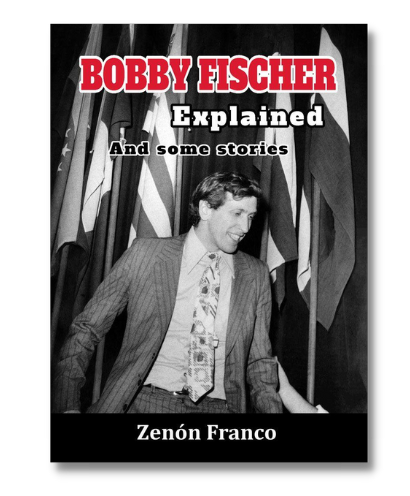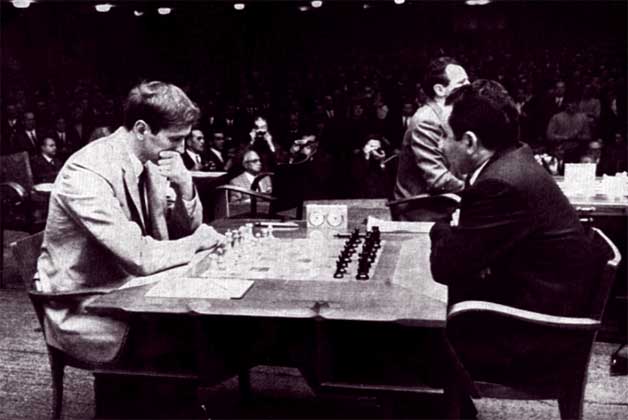Review of Bobby Fischer Explained: And some stories
“Chess is a matter of subtle judgment – knowing when to punch and knowing when to duck.”
– Bobby Fischer.
The year 2022 marks the 50th anniversary of the Fischer-Spassky World Championship match, and it’s therefore fitting that several major books on Fischer were published this year. The author of the current book Bobby Fischer Explained: And some stories, GM Zenón Franco, writes about the motivation for this book as follows.
‘A few years ago I rejected the idea of writing a book about Fischer’s games because I felt that so much had already been written about him that it would be difficult for me to bring anything new to it. But I changed my mind; I think that a new study using the “Move-by-Move” format, is appropriate for commenting on his games and is useful for both learning and teaching.’

The book starts with a brief introduction to Fischer’s playing style, which includes quotes from other players, particularly some insightful comments by Vladimir Kramnik. The 14th World Champion writes:
‘There was a moment when he had everything at once: energy, force, preparation, playing strength… As though all the rays converged in one point! He just had no weaknesses – how to play against such a man?! All great chess players have that period when they are on top of every aspect of their game; I think that Fischer peaked during that Candidates cycle and the Spassky match.’
The main part of the book is the discussion of 60 of his games. These games cover most of his career and include the period 1956 – 1992, with the latter year being the date of the rematch against Spassky. Each game includes various exercises where the reader is asked questions about the current position. The questions can be specific tactical questions, like finding the winning move, or more general ones, like finding a good plan.
The answers and other annotations to the games are mostly reasonably concise, and they don’t normally overwhelm the reader with deep computer-generated analysis. However, complex annotations are required in some cases to establish the correct details of a position. This approach makes the book more accessible to a range of players. The games also include relevant background material to the games, which is sometimes quite humorous, and a selection of annotations from other commentators.
The background stories provide some interesting insights into Fischer’s psychology as he was making his charge to the World Championship and his constant rivalry against the top Soviet players. An example of this is the background to Fischer’s return to chess in 1970 in the famous ‘Match of the Century’, after a long period of inactivity. The author writes:
‘Nonetheless, Fischer’s anxiety before playing was palpable, as Taimanov relates. Fischer arrived half an hour late to play his first game against Petrosian, “white as a sheet,” and he even hesitated before making his first move. After that, though, everything changed: his body language became once more that of the formidable fighter he was, and his tension was forgotten… Fischer wrote a letter to his friend Walter Browne, in which he told him how nervous he felt, not having played for some time, but that when he saw Petrosian’s face he calmed down. “He looked scared!”’

The final part of the book contains an homage to Fischer via a poem and a summary of his career. The book also includes a good range of photos,
Two examples from the book are given below, with annotations from the book.
Bobby Fischer Explained: And some stories Example 1
Bobby Fischer Explained: And some stories Example 2
In summary, the book is an instructive and entertaining look at Bobby Fischer’s career. The ‘move by move’ format also makes the book a good teaching text that will help readers to improve their game.
Have any thoughts or questions? Let us know in the comments below!
- 1000 Published books on Forward Chess - November 15, 2024
- Book Review: A Guide To Chess Improvement - September 9, 2024
- Review: Chess Coach by Vladimir Barsky - August 26, 2024
